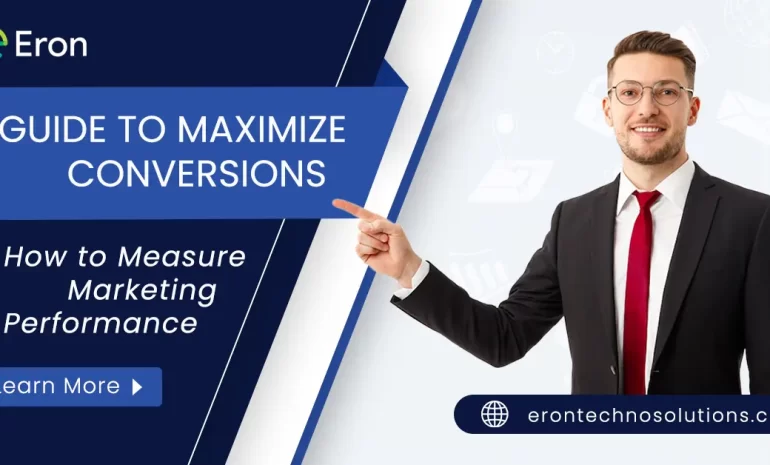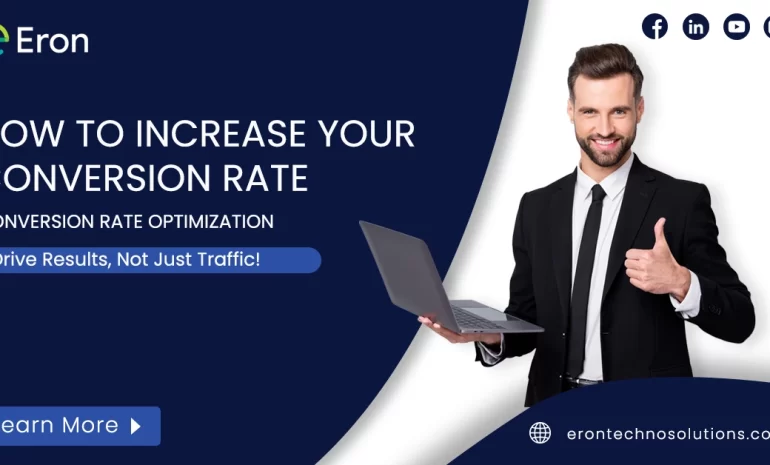Within the arena of Digital Marketing, where strategies often change faster than you can modify yourself to better suit them, conversion Rate Optimization has been established as a game-changing tactic that businesses are using resolutely in their efforts to make sure they remain relevant online.
Conversion rate optimization is the process of optimizing your website so that it converts at higher rates, that is more people who visit your site will take a desired action such as making a purchase or filling out a form, etc.
Driving traffic to a website is one thing ,whereas the real factor however is converting that traffic into results(leads/sales) is the ultimate Goal.
This blog will highlight you to optimize conversion rate through methods, tools and provide examples of how these can play out in the real world.
Table of Contents
What is Conversion Rate Optimization?
Conversion Rate Optimization (CRO) is the process of improving your website or landing page to increase the percentage of visitors who take a desired action.
These actions can vary depending on your goals and can include anything from making a purchase, signing up for a newsletter, filling out a contact form, or any other activity that aligns with your business objectives.
The main focus of CRO is not just driving traffic to your site but ensuring that the traffic converts into valuable outcomes.
It involves understanding how visitors interact with your site, identifying potential barriers to conversion, and making data-driven adjustments to enhance the user experience.
Why Conversion Rate Matters
Your conversion rate has a direct impact on your business success. Even a small increase can lead to a significant boost in revenue – without the need to drive more traffic. Imagine your website gets 10,000 monthly visitors with a conversion rate of 2%. That gives you 200 conversions.
If you increase the conversion rate to 3%, you’d achieve 300 conversions – a 50% increase in sales without additional traffic.
This is why CRO is such a powerful tool. It helps businesses make the most of their existing efforts, driving more results at a lower cost.
Understanding Your Audience
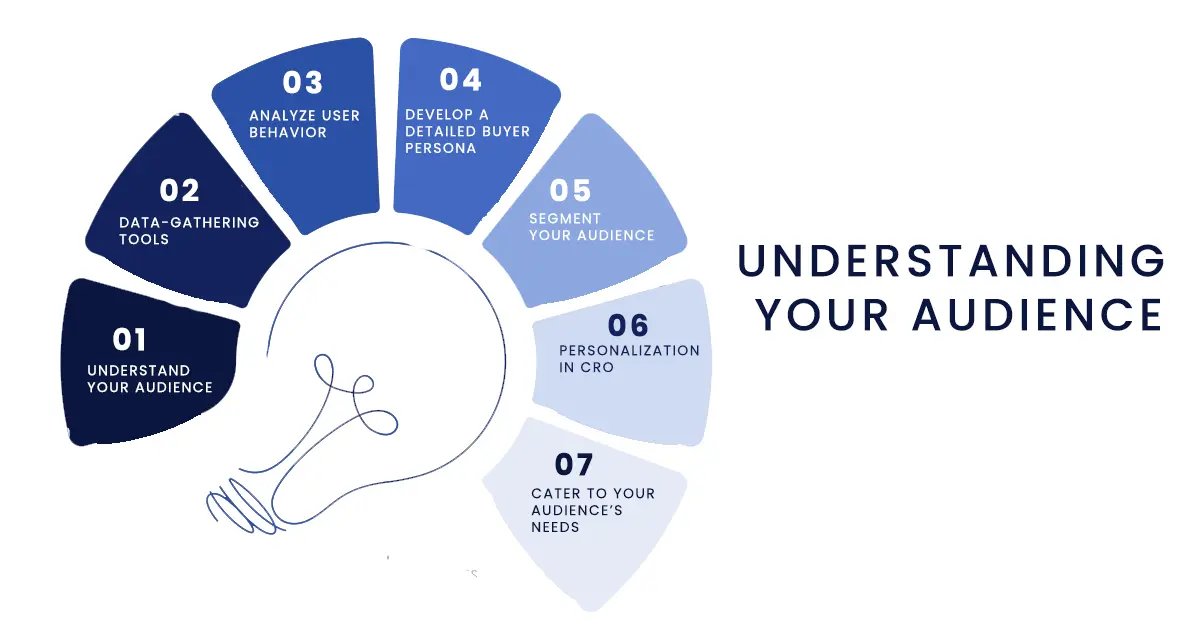
To effectively optimize your conversion rate, a deep understanding of your audience is essential. This means going beyond basic demographic information to explore the motivations, behaviors, and needs of your visitors.
Tools like Google Analytics, heat maps, and user surveys play a critical role in gathering this data. Google Analytics can reveal key insights, such as where your traffic is coming from, how long users stay on your site, and which pages they interact with the most.
Heat maps visually represent where users are clicking, scrolling, or dropping off, helping you identify areas of your site that may be confusing or unengaging.
Surveys and feedback forms allow you to gather qualitative insights directly from your users, uncovering pain points or desires that may not be apparent through quantitative data alone.
This enables you to see how users interact with your site and start gathering data that helps identify patterns and trends related to user behavior on your website.
For example,
Do visitors exit after viewing a specific page? Are they abandoning their cart during the final checkout? Use these insights to inform targeted optimizations-you may need to redesign some pages, simplify the checkout process, or address user concerns more explicitly.
Ultimately, this results in a user experience on your website that meets users where they are, driving up engagement and conversion rates.
Develop a Detailed Buyer Persona
Once you’ve collected and analyzed your audience data, the next step is to create a detailed buyer persona. This is a semi-fictional representation of your ideal customer, based on real data and market research.
A buyer persona includes demographic details (like age, gender, job title, or income level) as well as psychographic information such as interests, values, and pain points.
Segment Your Audience
By creating buyer personas, you’re essentially segmenting your audience into unique groups, each with their own needs and goals. For example, if you’re running an e-commerce store targeting both young professionals and retirees, their motivations will differ.
A young professional might prioritize speed and convenience, while a retiree might focus more on value and customer support. By identifying these differences, you can tailor your marketing efforts accordingly.
Use Personalization to Your Advantage
Personalization is one of the most powerful tools in Conversion Rate Optimization (CRO). When users feel like a brand truly understands them, they’re more likely to engage. You can use your personas to create specific, attention-grabbing messages and offers.
By tailoring content to the unique needs of each group, not only will you improve their experience, but you’ll also increase the chances of conversion.
Cater to Your Audience’s Needs
A personalized approach allows you to show users that your product or service is designed specifically for them. When people feel like a solution is tailored to their situation, they’re much more likely to take action.
Whether it’s through targeted content or custom offers, personalization can make all the difference in driving conversions.
Key Elements of Conversion Rate Optimization

1. Web Design and User Experience (UX)
The design and user experience (UX) of your website play a huge role in boosting your conversion rates. While everyone wants a beautifully designed site, too much complexity can backfire.
A cluttered layout with fancy features can confuse visitors, making it hard for them to take action.
Here are a few key things to focus on:
1.Navigation:
Make sure users can easily find what they’re looking for. Clear menus and links help guide them to the right content or product.
2. Load Times:
No one likes waiting around for a slow page to load. A fast website keeps users happy and reduces the chances of them leaving (or “bouncing”) before taking action.
3. Responsive Design:
More people are browsing from their phones, so it’s crucial that your site works smoothly on mobile devices. A responsive layout ensures your website looks and functions great on any screen size.
A well-designed website should make it easy for visitors to move through the conversion process without any obstacles.
The goal is to create a seamless experience that helps users take the action you want, whether that’s signing up, buying something, or filling out a form.
2. Compelling Copywriting
Effective copywriting is all about being concise, clear, and persuasive. It’s important to get your message across quickly, so readers don’t have to guess what you mean. Here are some tips to help you write copy that connects with your audience:
1.Be Concise:
Keep your sentences short and to the point. Avoid using complicated words or phrases that might confuse your readers. Think about what you really want to say and stick to it. This way, your message is more likely to resonate.
2.Use Clear Language:
Your audience should understand your message right away. Avoid jargon or technical terms unless you’re sure your readers are familiar with them. Instead, use everyday language that everyone can grasp.
3.Be Persuasive:
The goal of your copy is to encourage readers to take action. To do this, use language that highlights the benefits of what you’re offering.
For instance, instead of simply saying “Submit,” try something more engaging like “Start Your Free Trial” or “Get Your Application Now.” These phrases create a sense of excitement and urgency, prompting users to take the next step.
4.Include Strong Calls to Action (CTAs):
CTAs are crucial in guiding users on what to do next. Make them action-oriented and specific. Phrases like “Join Our Community” or “Claim Your Discount Today” clearly tell the reader what they can expect by clicking the button.
5.Create a Sense of Urgency:
Encouraging immediate action can boost conversions. Use time-sensitive language like “Limited Time Offer” or “Only a Few Left!” This makes readers feel like they might miss out if they don’t act quickly.
Remember, the key to effective copy is understanding your audience and speaking to their needs. When you write with clarity and purpose, you create a welcoming space for readers to engage with your content and take the actions you want them to take.
3. A/B testing
A/B testing is a powerful method for figuring out what resonates most with your audience. It involves comparing two versions of a webpage or element – like headlines, images, or call-to-action buttons (CTAs) – to see which one performs better.
Let’s say you’re unsure whether a bold headline or a more subtle one will grab attention. With A/B testing, you can show one version (Version A) to half of your audience and the other version (Version B) to the other half.
Then, you measure which one gets more clicks or leads. This simple process helps you make data-driven decisions instead of guessing what works.
What can you test? Here are a few ideas:
Headlines: See if a catchy or straightforward headline gets more clicks.
Images: Test different visuals to find which grabs attention.
CTA Buttons: Change the wording, color, or placement of your call-to-action buttons to see what encourages more conversions.
Tools like Google Optimize make it easy to set up and run these tests. The key to successful A/B testing is to make one change at a time and measure its impact. Over time, these small improvements can lead to big gains in your conversion rates.
4. Social Proof and Trust Signals
When it comes to converting visitors into customers, trust is everything. People are more likely to take action on your website if they feel confident in your brand. One of the most effective ways to build that trust is by using social proof and trust signals.
Here’s how you can do it:
1.Customer Testimonials:
Share what your customers are saying about you. Positive feedback from real people adds authenticity and shows potential customers that others have had a good experience with your product or service.
2.Reviews and Ratings:
People love reading reviews before making a decision. Displaying honest customer reviews and high ratings can push someone from “just browsing” to “ready to buy.” Even showing how many people have rated your product can have an impact.
3.Case Studies:
Case studies are powerful because they provide a real-life example of how your product or service helped solve a problem. It’s proof that what you’re offering works, backed up by facts and results.
4.Trust Badges:
These are logos or icons that show you’re partnered with trustworthy third parties, like security certifications (SSL), well-known payment providers, or industry awards. Trust badges give users peace of mind, especially when it comes to online transactions.
Incorporating these elements into your website reassures potential customers that they’re making a safe and smart choice. When people see that others trust your brand, they’re much more likely to convert.
5. Personalization
Personalization is all about creating a unique experience for each user based on their preferences, behaviors, or demographics. It’s like having a conversation with someone who understands exactly what you want. By tailoring the content and offers to match a user’s needs, you can make them feel more connected to your brand – and that leads to higher conversions.
For example,
Imagine you’re running an online store. A user from New York sees recommendations for winter coats, while a user from Florida gets suggestions for sunglasses and beachwear. This kind of personalization based on location makes the experience more relevant and increases the chances of a purchase.
You can also personalize based on browsing behavior. If someone has been looking at running shoes on your site, you can show them related products like running gear or offer a discount on shoes on their next visit.
This level of relevance not only keeps users engaged but also makes it easier for them to find what they’re looking for, which leads to more conversions.
In short, personalization is about making each user feel like your website was designed just for them.
When done right, it creates a better user experience, builds trust, and ultimately drives more sales or sign-ups.
6. Conversion Funnel Management
The conversion funnel is a way to visualize the journey people take from first learning about your business to finally taking action, like making a purchase or signing up. By understanding each stage of the funnel, you can optimize your approach and guide more users toward converting.
Here’s a breakdown of the key stages:
1.Awareness:
This is the first time someone discovers your brand. Maybe they find you through a Google search, a social media post, or an ad. At this stage, it’s important to make a good first impression by showcasing what your business is all about.
2.Interest:
Once users are aware of your brand, they start exploring what you offer. They might browse your website, read a blog post, or check out your products or services. Here, your goal is to keep their attention by offering valuable and relevant information.
3.Desire:
Now that they’re interested, the next step is to make them want your product or service. This is where you highlight the benefits, features, or solutions that set you apart from the competition. Think of it as answering the question, “Why should I choose you?”
4.Action:
This is the moment of truth—when users take the final step and convert, whether that’s making a purchase, signing up for a newsletter, or filling out a form. At this point, everything should be smooth and easy for them to complete the action without any hurdles.
By optimizing each of these stages, you help guide users through the funnel more effectively. Whether it’s improving how you attract attention in the awareness stage or making the checkout process seamless in the action stage, each part plays a crucial role in increasing conversions.
Analyzing and Measuring Success
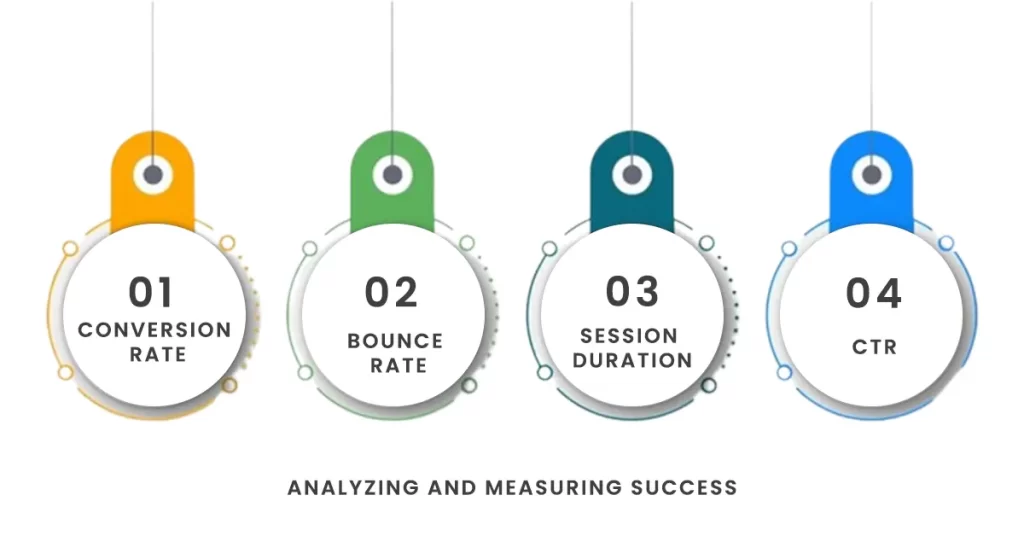
To see if your conversion rate optimization (CRO) efforts are working, it’s important to track a few key metrics. These will help you understand how well your website is performing and where you might need to make improvements.
Here are the most important metrics to focus on:
1.Conversion Rate:
This is the percentage of visitors who take the action you want, like making a purchase, signing up for a newsletter, or filling out a form. A higher conversion rate means your site is doing a good job of turning visitors into customers or leads.
2.Bounce Rate:
This shows the percentage of people who leave your website after viewing just one page, without interacting further. A high bounce rate could mean your content isn’t engaging or relevant, or that your site is difficult to navigate.
3.Session Duration:
This tells you how long visitors are staying on your site. The longer they stay, the more likely they are to engage with your content and take the desired action. If people are leaving too quickly, you might need to improve your content or design.
4.Click-Through Rate (CTR):
This is the percentage of users who click on your calls to action (CTAs), like buttons or links that prompt them to take the next step. A high CTR means your CTAs are clear and compelling, encouraging people to take action.
By keeping an eye on these metrics, you can better understand how users are interacting with your site and where you can optimize further to improve conversions.
Tools for Optimize Your Conversion Rate:
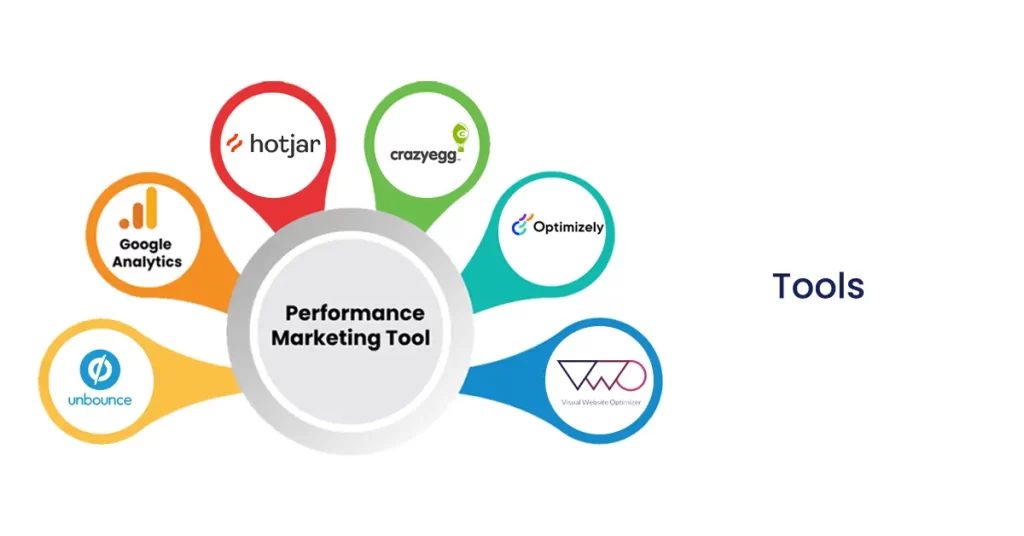
If you want to improve your website’s performance, you need to measure and analyze how visitors interact with your site. Luckily, there are several great tools out there that can help you track, analyze, and optimize your conversion rates. Here’s a quick rundown of some of the most popular and effective CRO tools:
1.Google Analytics:
Google Analytics is a must-have for any website. It helps you track user behavior, traffic sources, and conversions. You can set up specific goals to see how many visitors complete desired actions (like filling out a form or making a purchase). It’s an essential tool for gaining a deep understanding of what’s working and what needs improvement.
2.Hotjar:
Hotjar offers visual insights into how people are interacting with your website through heatmaps, session recordings, and feedback tools. With heatmaps, you can see which areas of your site users click on most, while session recordings let you watch real user interactions, helping you spot issues or areas for improvement.
3.Crazy Egg:
Crazy Egg is another tool that provides heatmaps, scroll maps, and click tracking. It also has an “A/B testing” feature that allows you to experiment with different layouts and designs to see which one leads to better conversions. Crazy Egg is a user-friendly tool that makes it easier to see what’s grabbing attention and what’s being ignored.
4.Optimizely:
Optimizely is a powerful A/B testing tool that lets you test different variations of your website to see which one performs better. You can test headlines, images, buttons, and more. It helps you make data-driven decisions to optimize your site for conversions.
5.VWO (Visual Website Optimizer):
VWO offers comprehensive CRO features, including A/B testing, multivariate testing, and heatmaps. It’s a great all-in-one tool for testing different design elements and tracking user behavior, helping you continuously improve your conversion rate.
6.Unbounce:
Unbounce is a tool focused on creating and optimizing landing pages. It offers A/B testing, drag-and-drop design, and analytics to help you quickly test and tweak landing pages for higher conversions.
Each of these tools gives you valuable insights and data to help improve your conversion rate. Whether it’s tracking user behavior with Google Analytics, seeing where visitors click with Crazy Egg, or testing different website designs with Optimizely, these tools are essential for refining your website and turning visitors into customers.
Common CRO Mistakes to Avoid:
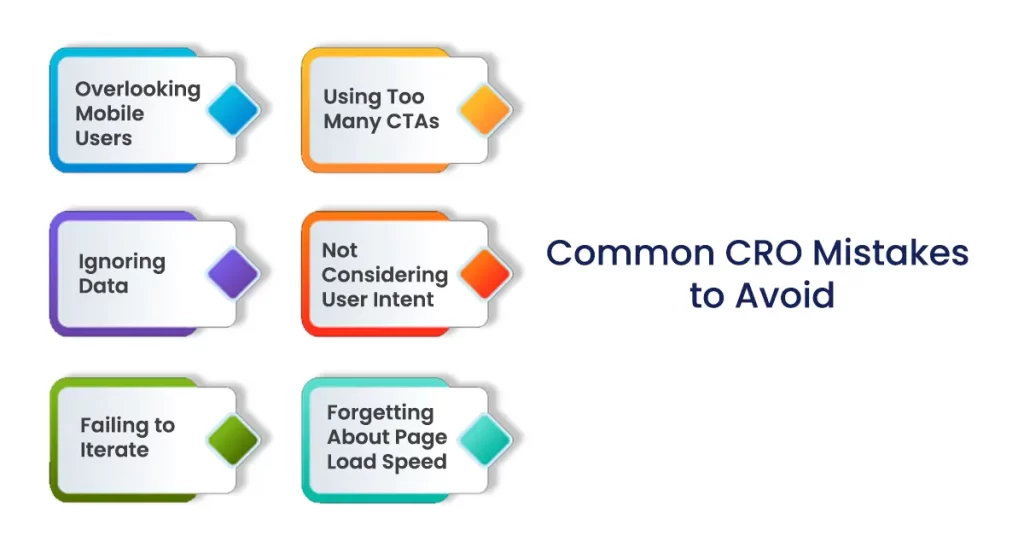
When working on Conversion Rate Optimization (CRO), there are some common pitfalls that can hurt your results. Avoiding these mistakes will help you get the most out of your efforts and improve your website’s ability to turn visitors into customers.
1.Overlooking Mobile Users:
With more than half of all web traffic now coming from mobile devices, it’s crucial to offer a smooth, user-friendly experience on smartphones and tablets. If your website isn’t mobile-optimized, you could be losing a lot of potential conversions.
2.Ignoring Data:
CRO should be driven by real data, not assumptions. It’s tempting to trust your gut, but decisions need to be based on actual insights from analytics, heatmaps, and user feedback. Relying on data helps you focus on what really matters and avoid wasting time on changes that might not help.
3.Failing to Iterate:
CRO is not a one-time fix. It’s an ongoing process that involves constant testing, learning, and improving. Regularly analyze your results, run A/B tests, and refine your approach to stay in sync with changing user behavior and market trends.
4.Using Too Many CTAs:
Bombarding visitors with too many Calls to Action (CTAs) can overwhelm them and reduce the chances of them taking any action at all. Keep your CTAs simple and focused, and guide users toward one clear action per page.
5.Not Considering User Intent:
It’s important to understand what your visitors are looking for. If your site doesn’t match their expectations or needs, they’ll leave without converting. Tailor your content and CTAs to meet the intent of your audience, whether they’re researching, comparing, or ready to make a purchase.
6.Forgetting About Page Load Speed:
A slow website can turn visitors away before they even get a chance to explore your offerings. A fast-loading page is crucial for keeping users engaged and improving your conversion rates. Tools like Google PageSpeed Insights can help you spot and fix speed issues.
7.Failing to Build Trust:
If your website doesn’t build trust with visitors, they’re unlikely to convert. Things like outdated design, lack of social proof (like reviews or testimonials), or unclear privacy policies can hurt your credibility. Make sure your site is visually appealing and transparent about your offerings and policies.
By avoiding these common mistakes, you’ll set yourself up for success with CRO. The key is to be data-driven, focused on user experience, and always ready to improve based on what works.
Final Thoughts
Conversion Rate Optimization (CRO) is a game-changer for any business looking to get the most out of their website. It’s not just about getting more traffic; it’s about making sure the traffic you already have is turning into real results, like sales, leads, or sign-ups.
The key to CRO is understanding your users. By improving the overall experience, testing different elements, and continuously making adjustments, you can steadily increase your conversions. This isn’t a one-time fix but an ongoing process that can lead to long-term success for your business.
In the end, even small improvements in CRO can have a big impact, helping you get more value from the efforts you’re already putting into your website. The better your site works for your visitors, the better it will work for your business.

